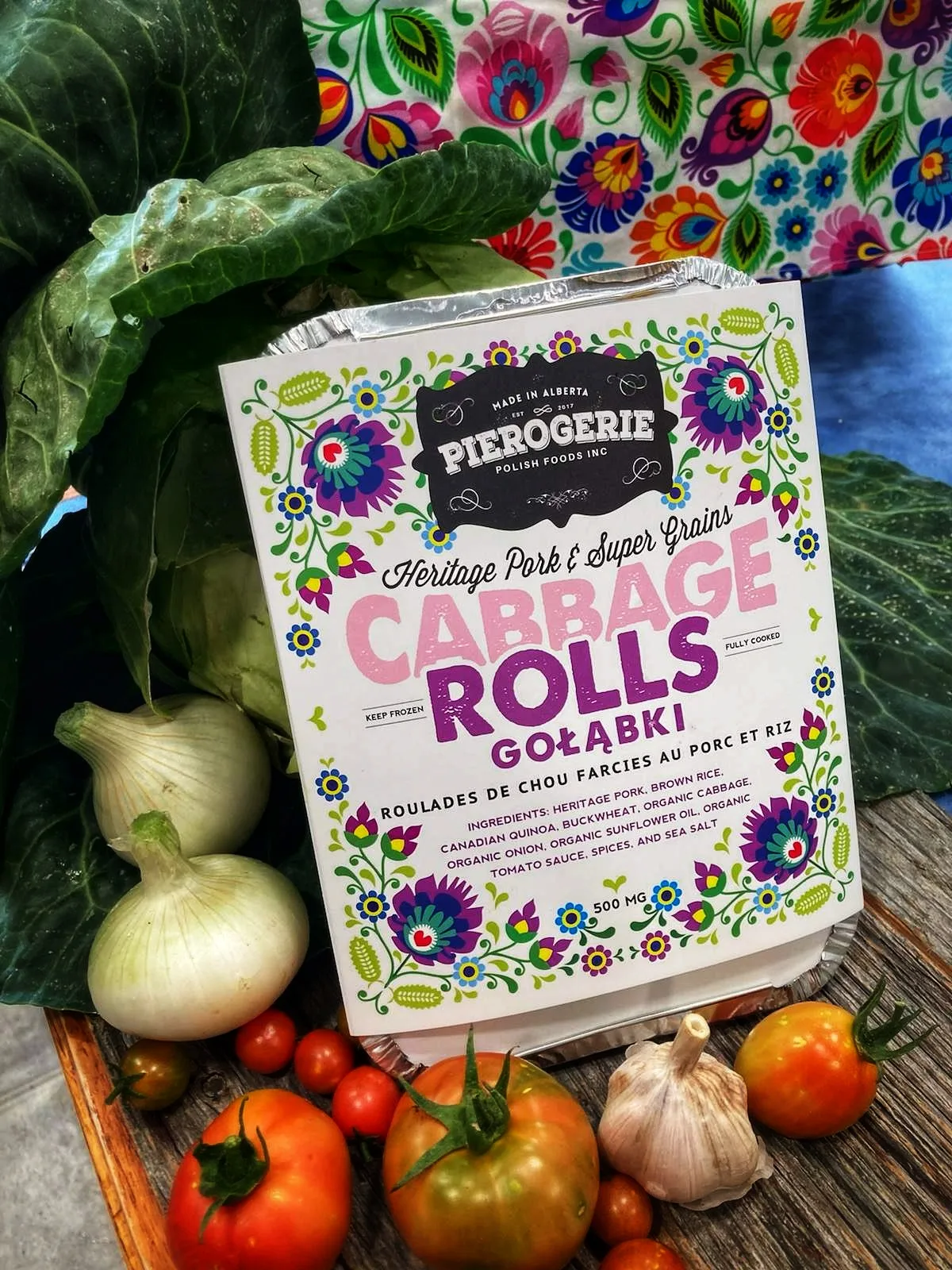We are celebrating the start of a new year with some new packaging inspired by the gorgeous, colourful, and intricate cut-paper Polish folk art style known as wycinanki (vi-chi-nan-kee). We incorporate the heritage of Polish folk art into our products so that we may continue to share this beautiful art style, and its associated legacy and history, with future generations, and to bring attention to the roots from which our traditonal recipes were created.
A history of Polish folk flower art
Wycinanki are a style of Polish folk art made by cutting paper into intricate designs. Similar to the cut-paper snowflakes that are made by schoolchildren around the holidays, wycinanki follow a mirrored pattern of finely cut motifs that are inspired by the Polish landscape and historical ways of life, used in all sorts of decorative applications.
The origin of wycinanki is somewhat contested, with their the true source of the art form being unknown. The most universally accepted origin stories stretch far back to the shepherding days of Poland’s early history, when the windows of homes were covered in sheepskins to protect from nature’s elements. The sheepskins were cut to allow some light to enter, and eventually those cut-outs took on decorative designs. Arguably, this tradition passed over generations and became the paper version we are now familiar with.
Our family history might offer some insight into the origins of this art form as well. As a child, I often remembered my grandmother “pressing” flowers as a method of preservation. She would take freshly picked flowers and place them between two heavy and dry objects (usually within the pages of large books), only to return a few weeks later to collect the dried and flattened flowers. This preserved the colour and shape of the flowers, preventing browning and withering. These flattened flowers are used in all sorts of decorative applications, like being arranged together in a mural that was framed and displayed, or being included inside holiday greetings cards, such as at Christmastime.
The many styles of wycinanki
There are two types of wycinanki most often seen today. The first is from the Kurpie region of Poland, a once heavily forested area that lies in the lowland plain of central Poland. This style is basic, usually made of single piece of colour paper with a fold down the centre to produce a symmetrical design. Inspiration for these motifs comes from local flora (often wildflowers and spruce trees) and fauna (often birds), although later designs incorporate more colour variation.
The second style is from the nearby Lowicz region, and is arguably more well known. This style features brightly coloured motifs of very intricate patterns. The composition of Lowicz wycinanki is made with many layers of coloured paper and typically resemble local flowers, although their appearance is an artistic rather than accurate representation. Farm motifs are also very common in the Lowicz style, with roosters often appearing among the floral patterns.
Modern wycinanki continue the stylistic tones of the original forms, but incorporate new techniques, materials and methods. Although many artists still choose to follow the symmetrical designs, some have broken away from this trend. Some include new materials and cutting techniques, such as laser cutting. And some prefer to create the designs using modern graphic editing software. Whichever style you prefer the most, wycinanki are instantly recognizable and are considered an important contribution to humanity’s art legacy.
Using wycinanki in our brand designs
It is the modern style we have used as inspiration for our product packaging. Some of our family claims belonging to the central region of Poland where wycinanki are from. The remainder of our roots are in the south, where traditional costuming is the most colourful and has intricate floral patterns, with wycinanki heavily influencing these designs.

Heritage Pork and Super Grains Cabbage Rolls
# in package: 4 rolls
4 cabbage rolls in our convenient oven-safe tin.
When we were imagining our brand design, we approached our graphic design partner with the idea to incorporate wycinanki prominently on our packaging as a means to connect our product to our roots and history, and to create a distinctive design that sets our product apart from others. You will also see wycinanki being used throughout our brand, such as on our website and social media.
We hope that you will appreciate this nod to our history, and join us in our celebration of Polish folk art. Our goal is to produce authentic products that recognize the rich history from which they have been born so that we may share in our heritage with you. Not only are wycinanki beautiful, they highlight our roots as a simple people that lived off—and were inspired by—the land they occupied.
If you would like to learn more about this form of art, and even try your hand at creating a piece yourself, Michigan State University offers a free online course with a history lesson and incorporated art activity. You can also purchase wycinanki art made by Polish artists from the Polish Art Center (or the artists on Instagram we linked above) to display in your own home or to give as a beautiful gift.

